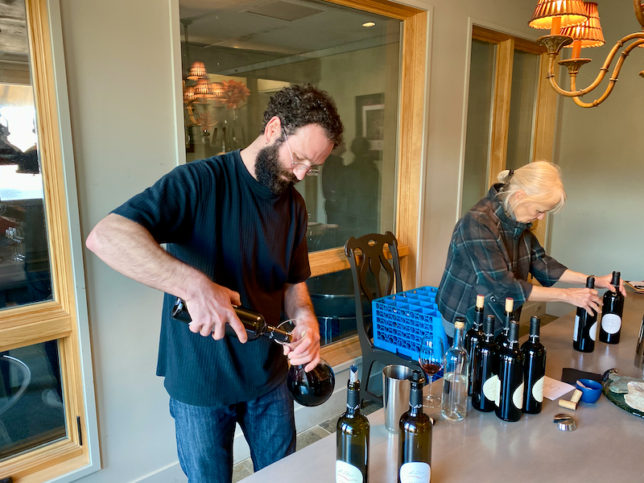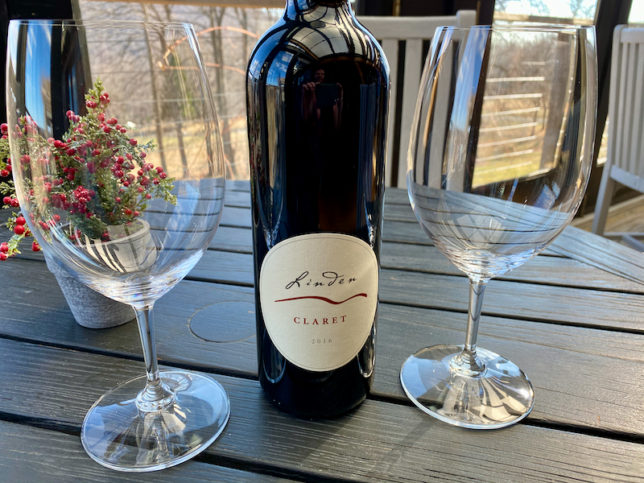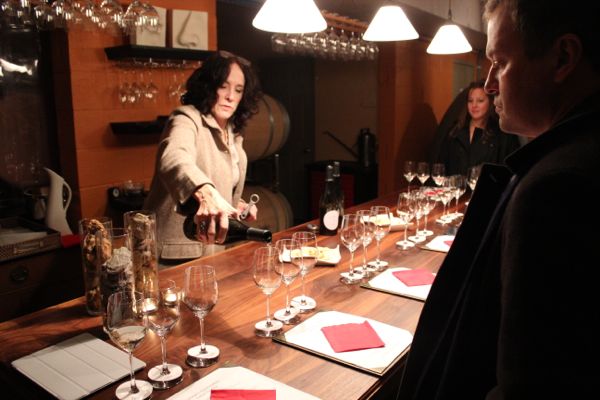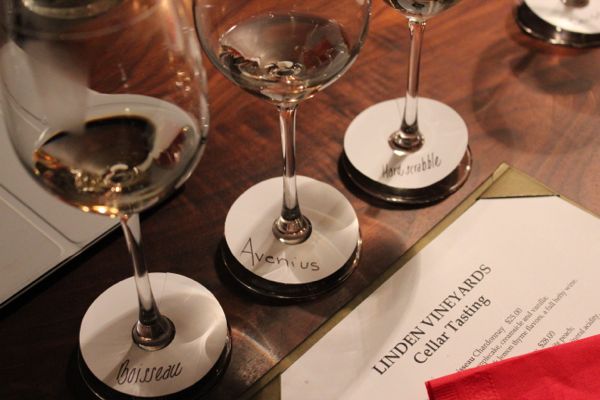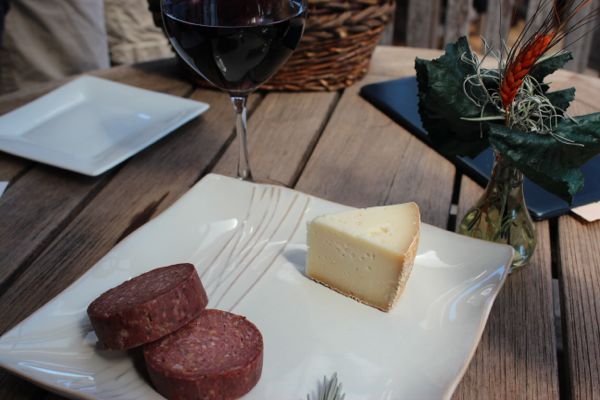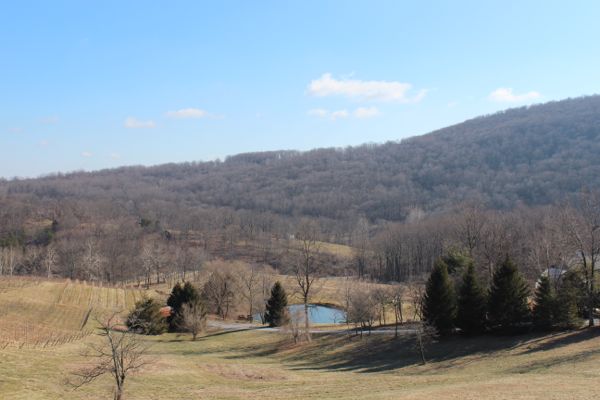We are all familiar with Darwin’s scientific theory of evolution; however, winemakers have their own viticultural theory of evolution. We recently became familiar with Jim Law’s theory of evolution at a recent tasting event at Linden fitfully called, “Evolution.”
https://www.fogliandpartners.com/ko3rr8hace6Ordering Ambien Jim Law’s reputation as the pioneer of excellent winemaking in Virginia is well known. Law bottled his first vintage in 1987, and this included a Cabernet Sauvignon that was tasted at the event. He described this vintage and those of the 1990s as years of understanding vineyard management with a struggle to achieve high expectations. The primary expectation was that wines expressed the terroir, or sense of place, while presenting a balance of acidity and alcohol. Jim’s trip to Bordeaux vineyards in the early 2000s was described by him as the time when the “light bulb went off”, and it was then that Law, already considered an accomplished winemaker, took his own evolution as a winemaker to a different direction. Under the direction of vineyard managers in Bordeaux, a re-evaluation of vineyard management at Linden Vineyards Hardscrabble site took place. This included both red and white wine varietals especially Cabernet Sauvignon and Chardonnay. Vines that were not appropriately placed and thus presented ripening challenges were ripped up, and new vines were planted to take advantage of the site’s unique terroir and micro-climate. The transition year was the 2007 vintage, and it was the 2007 Hardscrabble Red that was included in the session’s tasting.
https://www.salernoformazione.com/p7386g938vc https://www.varesewedding.com/y61tq0ec6https://hazenfoundation.org/m2oavu5sq It was by tasting through the vintages of Hardscrabble Reds and Hardscrabble Chardonnays that we could witness the results of this evolutionary process. Law described the 1987 Cabernet Sauvignon as the result of his “wild cowboy days” when he was still learning best vineyard and winemaking practices. It was indeed a treat to taste this one with its sweet fruit, cedar, and savory characteristics. Gone too since the wild west days is the use of American oak barrels that Jim favored in 1987. The 2009 Hardscrabble Red, two vintages past the transition phase, was stunning. Dark fruit and plum notes with nice acidity and fruit through the palate was framed by velvety tannins, and better-placed vines took advantage of a dry yet cool summer that resulted in slow, even ripening. The 2016 vintage was fourth in the line up of red wines, and it presented fresh cherry and cola on the palate; young with good length, Jim believed that this vintage of Hardscrabble Red will hit its stride in eight years.
https://www.mdifitness.com/tkc5fohy 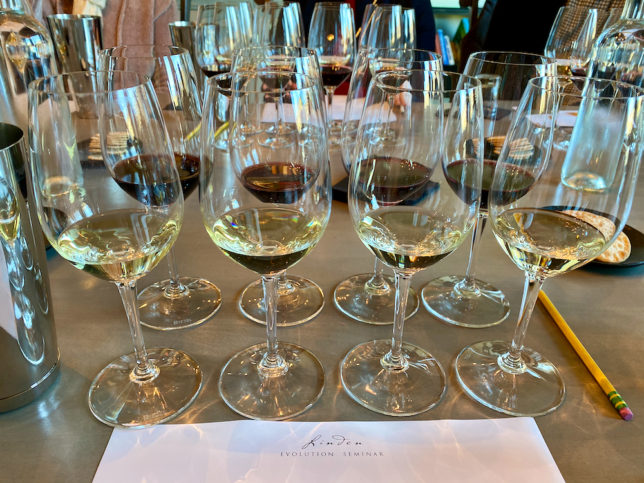
https://ballymenachamber.co.uk/?p=1n32l2teper Evolution perhaps would be meaningless without passion, and vineyard work is truly Jim Law’s passion. However, Law seemed even more committed to his Chardonnay site that created the Hardscrabble Chardonnay. Chardonnay from Burgundy had been his father’s love, and Jim was allowed to sample the pleasures of white Burgundy wines at a very young age. This in turn led to Jim’s own desire to know more about wine, wine regions, winemaking, etc.; of course, the rest of history. A sampling of Chardonnay from Virginia’s Naked Mountain Vineyard in the 1980s convinced him that Virginia could produce stunning results from Chardonnay at a time when big, buttery Napa styles were the rage. The 2012 Hardscrabble Chardonnay was the earliest vintage offered for tasting, and here we tasted the product of older vines on the Hardscrabble site. Rich orchard fruit and lovely texture on the palate made for an elegant wine that Law declared had hit its “sweet spot.” His own favorite was the 2013 vintage with a fruit profile similar to the 2012 but leaner on the palate with a distinct mineral note. I favored the 2015 vintage with its juicy apple and pear presentation and generous feel on the palate. The white flight ended with the exquisite (and still evolving) 2017 Hardscrabble Chardonnay that seemed a bit riper on the nose and more acidic on the palate than the other vintages.
https://www.andrewlhicksjrfoundation.org/uncategorized/3axvpvsexef Cheap Clonazepam TabletsThe witness to evolution continued with a trip to the cellar, and here we tasted barrel samples of the 2019 Chardonnay that will eventually make up the Village Chardonnay; picked from young, four year old vines, this one was all fresh apple in the mouth. It was resting in older, neutral oak barrels. (The 2019 growing season, already being heralded by local winemakers as one of the best in at least 10 years, was hot and dry.) A contrast to this vivacious youngster was a sample of the 2019 Chardonnay from the hardscrabble site. Produced from older vines planted in the 1980s, it was softer on the nose with better acidity and yet a rounder palate. The session concluded with two barrel samples of 2019 Cabernet Sauvignon from the Hardscrabble site; the first sample seemed soft with fresh cherry notes. However, the second sample seemed more tannic with blackberry and plum flavors. Jim confided that a blending trial for the 2019 Hardscrabble Red would be taking place on the Monday after our session that weekend, and these Cabernet samples will be part of the decision making process.
Buy Cheap Zolpidem Online Evolving to achieve an expected standard of excellence best describes Jim Law as a vineyard manager and winemaker. We learned so much about this evolutionary process both by Jim’s testimony to his own process as well as by tasting the results. At the end of the session, we also appreciated his hard work and dedication. We will continue to appreciate wines at Linden, both those that have evolved and those that are evolving. Be sure to attend one of Jim Law’s educational sessions or plan a trip to the tasting room to experience the excellent wines there. Of course, mention that Virginia Wine Time sent you!
Buy Ambien From Usa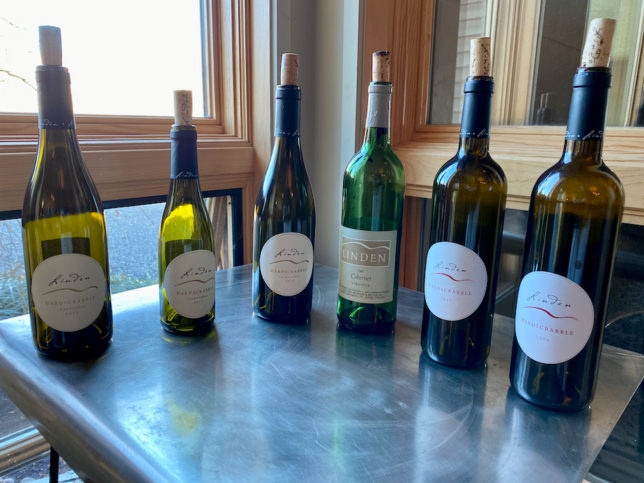
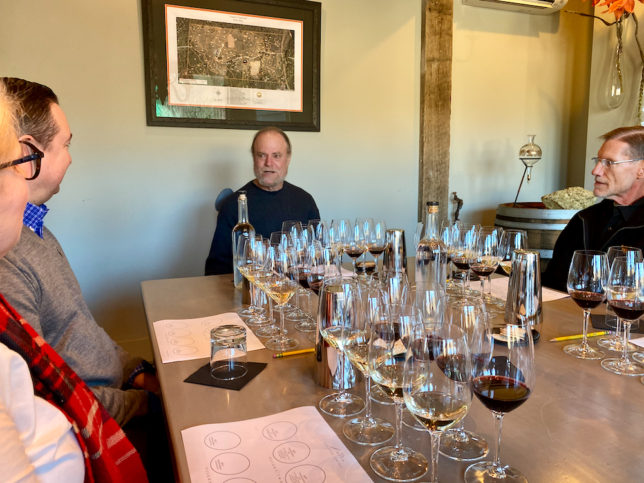
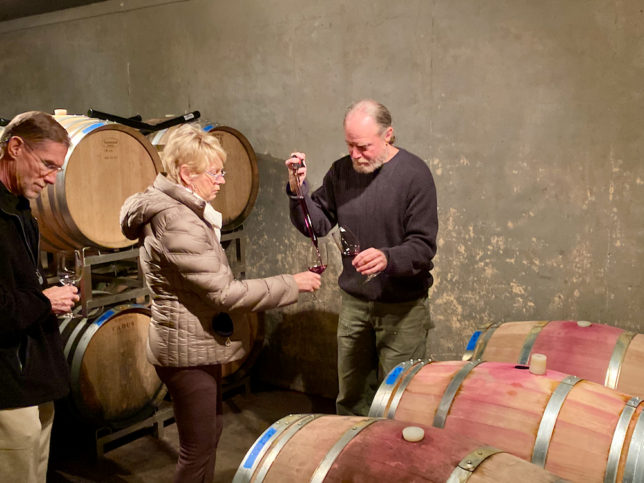
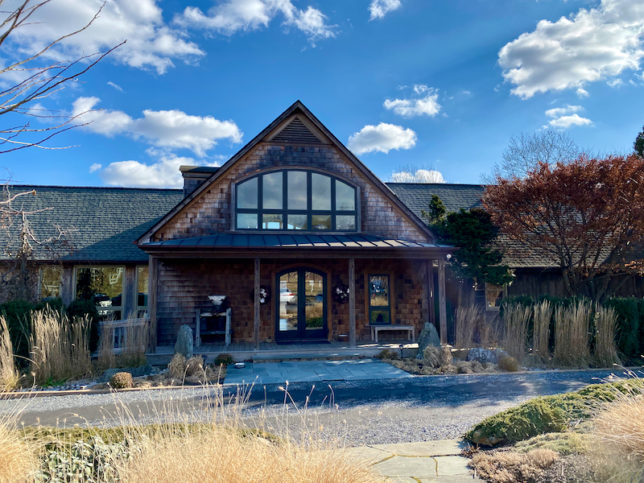
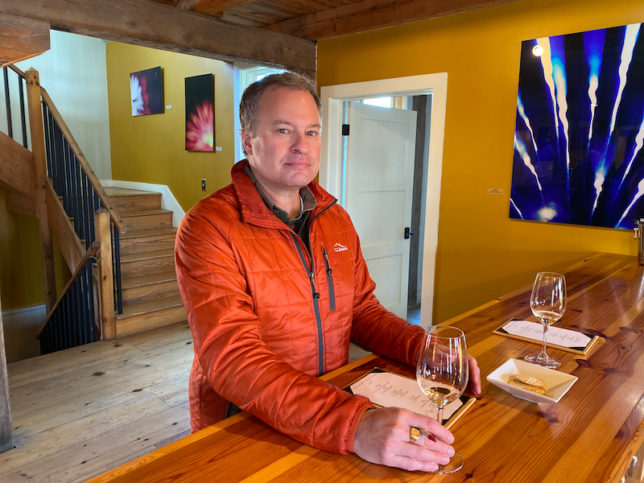
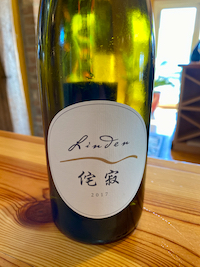 Yesterday we went to the Free Form Tasting at Linden. Of course we started with white wines. Jim introduced us to a new release. It’s called Wabi Sabi. It’s a blend of Vidal, Semillion, and the 2017 Boisseau Viognier. Warren wrote down dry, exotic, generous weight on the palate due in large part to the Viognier. We think this one would pair well with spicy dishes. We went on to taste the 2017 Boisseau Viognier on it’s own (which we had last weekend as well) and the 2018 Riesling. Both are wonderful wines anyone would enjoy.
Yesterday we went to the Free Form Tasting at Linden. Of course we started with white wines. Jim introduced us to a new release. It’s called Wabi Sabi. It’s a blend of Vidal, Semillion, and the 2017 Boisseau Viognier. Warren wrote down dry, exotic, generous weight on the palate due in large part to the Viognier. We think this one would pair well with spicy dishes. We went on to taste the 2017 Boisseau Viognier on it’s own (which we had last weekend as well) and the 2018 Riesling. Both are wonderful wines anyone would enjoy.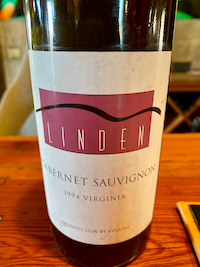 We changed tasting bars to taste the red selections. We tasted the 2014 and 2016 Clarets. Last weekend when we tasted these we preferred the 2014 which has a bit more acidity but this weekend we both enjoyed the 2016. Before leaving this tasting bar we were treated to a tasting of the 1994 Cabernet Sauvignon. What a treat! We noted leather, cedar, sage and dark currants. Amazing how well it is holding up!
We changed tasting bars to taste the red selections. We tasted the 2014 and 2016 Clarets. Last weekend when we tasted these we preferred the 2014 which has a bit more acidity but this weekend we both enjoyed the 2016. Before leaving this tasting bar we were treated to a tasting of the 1994 Cabernet Sauvignon. What a treat! We noted leather, cedar, sage and dark currants. Amazing how well it is holding up!